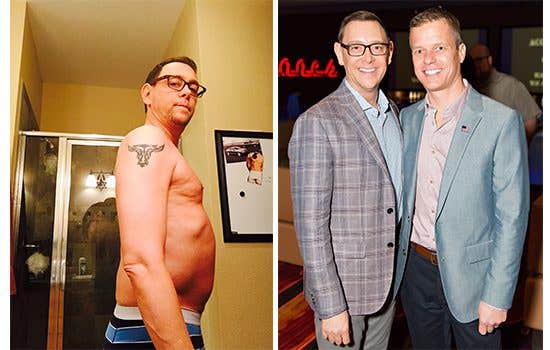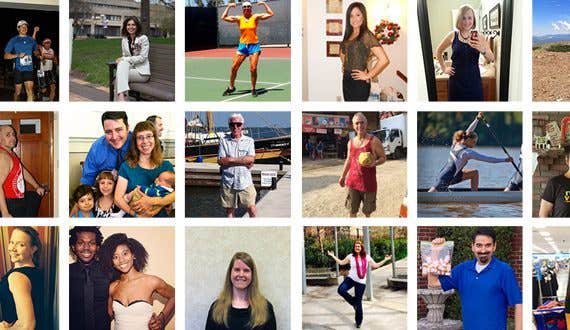
How I Beat IBS and Acid Reflux with a Plant-Based Diet
By Jace Rogat,
Growing up in a Jewish household, food was central to every occasion. Lox and bagels with cream cheese, chicken soup, brisket, and corned beef were some of the common foods on the table. I was eating a typical Standard American Diet (SAD) until I was around 40 years old. As far back as I can remember, I always had stomach difficulties. I was diagnosed with irritable bowel syndrome (IBS) in my early 20s. I also had severe acid reflux. I always had a roll of Tums and a bottle of Imodium on hand; whether in my car or at the office, they were never far away. I had my work commute set up carefully so if I needed to make a quick pit stop, I always had a clean place to go to the bathroom. My stomach was clearly running my life.
While eating a SAD diet, I was never severely obese, but my Body Mass Index (BMI) showed that I was heading in that direction. I hit a BMI of 26 BMI at my heaviest. I was not feeling the energy I once had.
Embarking on a Plant-Based Journey
One weekend in 2014, my husband and I stumbled upon the documentary Fat, Sick and Nearly Dead. The film was an eye-opener and definitely struck a chord with both of us. Afterward, we challenged each other to go on a juice fast for five days. We chose to start the fast on a Friday. This gave us the weekend to relax, chill, or whatever might come about while we were going through the detox.
When we woke up on Saturday, we didn’t feel so great. We hadn’t had coffee in 24 hours. My head was pounding! We decided to stay in and watch more documentaries. We chose Forks Over Knives because it was a “suggested” documentary based on the previous show we watched. Needless to say, the Forks Over Knives documentary changed our lives forever. After we completed our five-day juice detox, we started the journey of plant-based eating immediately.
Vegan vs. WFPB
Early on, we didn’t really understand the difference between going vegan and eating a whole-food, plant-based (WFPB) diet. We assumed that as long as there was no meat or dairy in a food, we could eat it and it would be a “healthier” alternative. We started experimenting with a lot of the processed fake “meats” and “cheeses” to help us overcome cravings. We quickly realized that the taste of these foods wasn’t like what we were used to, so it was pretty easy for us to move past those items.
It wasn’t until we decided to take T. Colin Campbell’s online nutrition course through eCornell university that we really learned and understood the importance of a WFPB diet. The course helped us understand why processed foods, refined flours, sugars, and oils are so unhealthy for the body.
Sharing Our Nutrition Knowledge
After completing the nutrition course, we had so much more knowledge about WFPB eating. It really empowered us to share what we learned with whoever was willing to listen.
For some people, it went in one ear and out the other. Fortunately, many of my family members took an interest—my mother, especially. She had recently been diagnosed with cancer. She knew that changing her diet was essential to a successful recovery after her chemotherapy treatments. While visiting her in the hospital, we were absolutely amazed by the food options: hamburgers, french fries, baked potatoes loaded with butter and sour cream, and even milkshakes!
I cooked healthful plant-based meals to bring my mom in the hospital. The doctors and nurses saw what she was eating and were pleasantly surprised. The sad thing, though, is that they never outright acknowledged that this was a better diet for my mother’s health than the meals the hospital offered.
When my mother returned home from the hospital, she continued her plant-based way of life. She stressed its importance to my father, who has now also adopted this diet.
Discovering Forks Meal Planner
My husband and I own a small printing company in Colorado. Our time is spent mostly working on our business, so we have little time to spend in the kitchen. We’d used a couple of online meal planning services for convenience. Unfortunately, most of them included oils and refined ingredients. There were few WFPB diet options, so the choices are limited.
Then we discovered Forks Meal Planner, which has been a big help in sticking to a WFPB diet because it makes it easy to decide what to eat and how to shop. I enter the recipes that I want to make for the week ahead and it automatically creates a consolidated grocery list of what and how much I need to buy, organized by aisle. That is my favorite feature of the planner: I can get in and out of the grocery store quickly and without distractions.
Before discovering Forks Meal Planner, it was such a pain trying to come up with quick and easy healthy lunches. Now I make four servings for each meal, which allows us to each eat a healthy dinner at night and have another full serving for lunch the next day. Not only has it helped control my weight and keep my energy levels high but also it has also saved us more than $100 a week, since we’re not eating out every day for lunch. A few of my favorite recipes include Paella, One-Pot Chili Mac, Hopping John Grits, and Hearts of Palm Tapenade.
Eating to Beat IBS
Since I transitioned to WFPB, the most noticeable difference is that I no longer take any over-the-counter drugs. I haven’t taken an antacid or upset stomach medication since I began my WFPB journey over six years ago. I no longer need to make quick pit stops at public restrooms while I’m out and about. My IBS is gone!
At first, I thought I’d miss a lot of the old foods I used to eat and would have cravings or feel like I was deprived, but I don’t feel that way at all now. My palate has really changed. I am an advocate for WFPB eating, and I share my experience and how I eat with my friends and family. Doing that has inspired several of my family members to adopt a WFPB diet, and although none of my friends have adopted a WFPB diet, they’re becoming aware of the potential benefits of this diet by witnessing my example.
Ready to get started? Check out Forks Meal Planner, FOK’s easy weekly meal-planning tool to keep you on a healthy plant-based path. To learn more about a whole-food, plant-based diet, visit our Plant-Based Primer.
Has a whole-food, plant-based diet impacted your life?
We would love to hear about it!
SHARE YOUR STORY
Join our mailing list
Get free recipes and the latest info on living a happy, healthy plant-based lifestyle.
By providing your email address, you consent to receive newsletter emails from Forks Over Knives. We value your privacy and will keep your email address safe. You may unsubscribe from our emails at any time.
